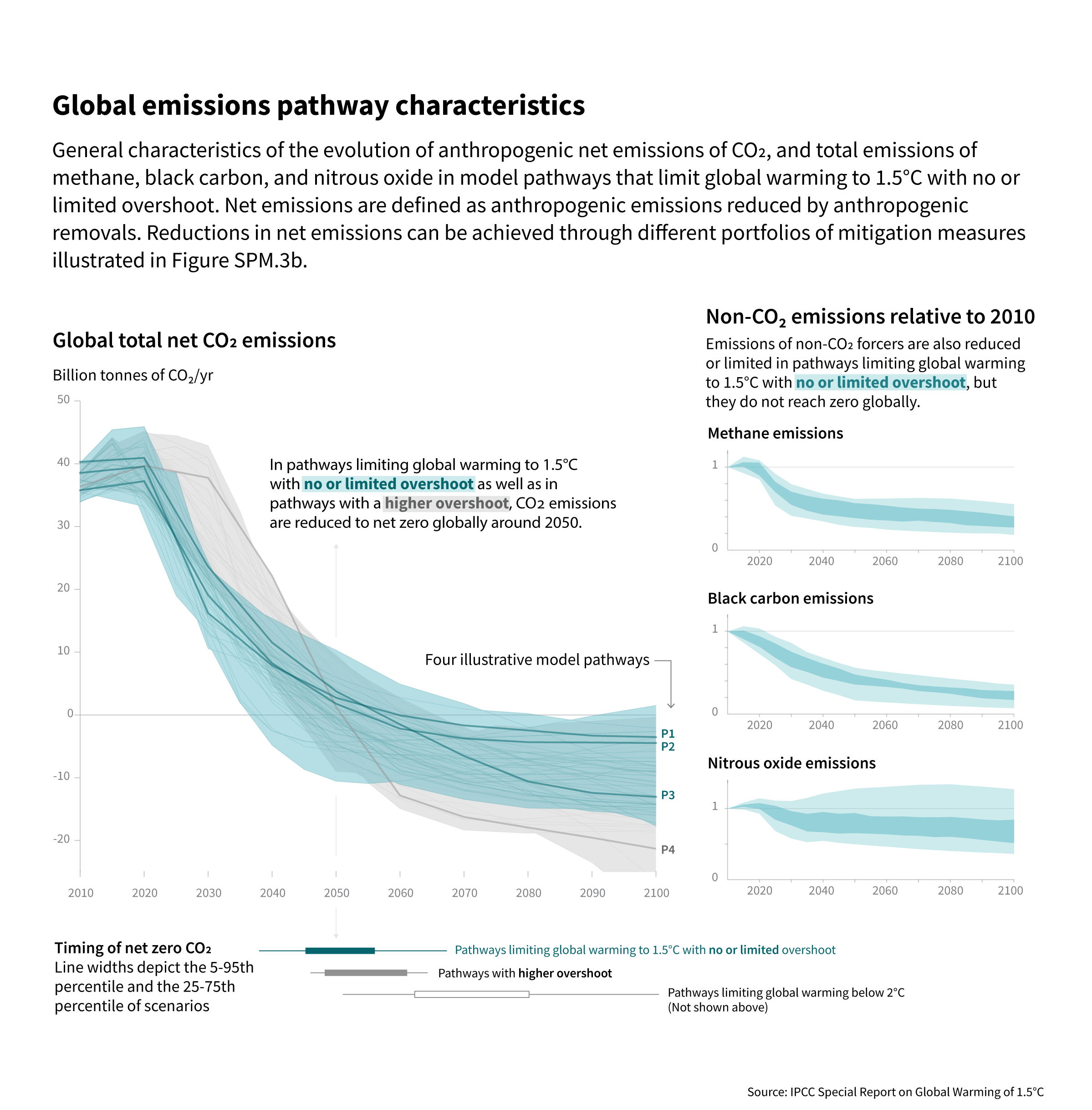The phrase net zero shows up everywhere and applies to many things — a future state, targets, and journeys. Its popularity is no surprise, given that the net zero concept has been a breakthrough that has united government and non-government players in the global economy.
What is net zero?
Net zero refers to a future state where the sum (or net) of human emissions and removals becomes zero. This is backed up by science, which says that we can stop and potentially reverse climate change by achieving this net zero state.
What are net zero targets?
Net zero targets refer to governments' and companies’ commitments to achieving this future state. There has to be a consistent approach to this so that everyone is working towards the same goal and that each government or company knows precisely what their net zero targets should be. This is achieved by the IPCC net zero pathways, which are used by everyone setting their target.
What is the net zero pathway?
The Intergovernmental Panel on Climate Change (IPCC), established by the United Nations, serves as the scientific leader in assessing the state of our planet's climate. Its latest report, based on the most current research and expertise, gives a comprehensive overview of the climate crisis, its impacts, and the pathways governments must take to mitigate it.
In the report, the IPCC published several distinct scenarios (e.g. We want to keep within 1.5°) and “pathways” that outline the year-on-year emissions reductions needed to keep within the scenario. These scenarios and pathway combinations range from ones aiming to limit global warming to well below 2°C above pre-industrial levels, with the bare-minimum pathway focused on limiting warming to 1.5°C above pre-industrial levels.
The currently accepted scenario everyone aims for when they commit to net zero is the bare minimum pathway, aiming to stay below this 1.5°C target. To help companies, the IPCC has done the research and analysis and has published outlines for the trajectory companies can follow to avoid, reduce and compensate CO2e emissions within and outside their supply chains to reach net zero targets.

What is the history of the net zero concept?
Since its inception in the early 2000s, the concept has become so widely accepted as the “gold standard” for emissions reduction targets that 91% of the global economy is covered by net-zero targets. The origin of the concept is in scientific research, which informed the work of the IPCC to bring the idea into the mainstream through its reports and, finally, for the concept to become a guiding principle in international climate negotiations through the UN Paris Agreement. Check out the timeline below.

.svg)